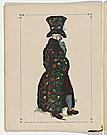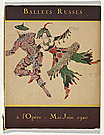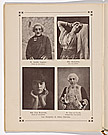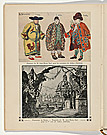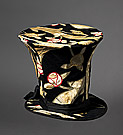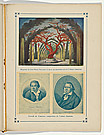Ballet de l'Astuce Féminine [Women's Wiles] / Cimarosiana
Opera-ballet in three scenes
- Producer: Les Ballets Russes de Serge Diaghilev
- Opera premiere: 27 May 1920, Théâtre national de l’Opéra, Paris
- Ballet premiere: 8 January 1924, Théâtre de l’Opéra, Monte Carlo
- Costume design: José-MarÍa Sert
- Costumier: Marie Muelle
- Scenery design: José-MarÍa Sert
- Music: Domenico Cimarosa, orchestrated by Ottorino Respighi
- Choreography: Léonide Massine, with Bronislava Nijinska
- Libretto: Guiseppe Palomba
- Main characters: Bellina, Giampaolo, Doctor Romualdo, Leonora, Filandro
Ballet de l’Astuce féminineis set in eighteenth-century Italy, where Bellina, a wealthy Roman heiress, in accordance with her father’s will must marry Giampaolo, an elderly Bergamo merchant. Her tutor, the elderly Doctor Romualdo, would like to marry her as well, although he is engaged to Bellina’s governess, Leonora. Bellina likes neither one; she loves Filandro. After running away and returning, both dressed as Cossacks, the pair eventually wed.
The ballet was included as a choreographic divertissement in Diaghilev’s 1920 opera production of the Domenico Cimarosa (1749–1801) opera Le Astuzie femminili, and later presented as an independent production, Ballet de l’Astuce féminine, in 1924, following which, in Barcelona on 24 April 1924 it was presented, and from then on known as, Cimarosiana. José-María Sert’s scenery and costumes brought rich and humorous Surrealist elements to an overall structure of Baroque design. The ballet consists of several different folk-based dances such as a tarantella and a contre-danse in a combination of peasant Greek, opera-bouffe, commedia dell’arte and Sicilian styles.





